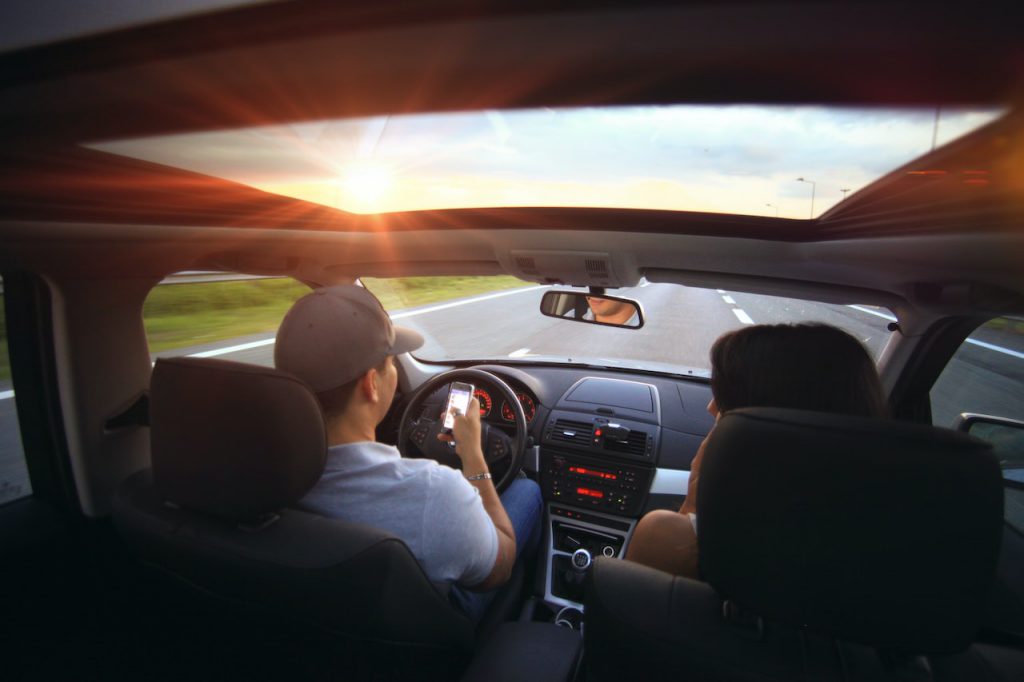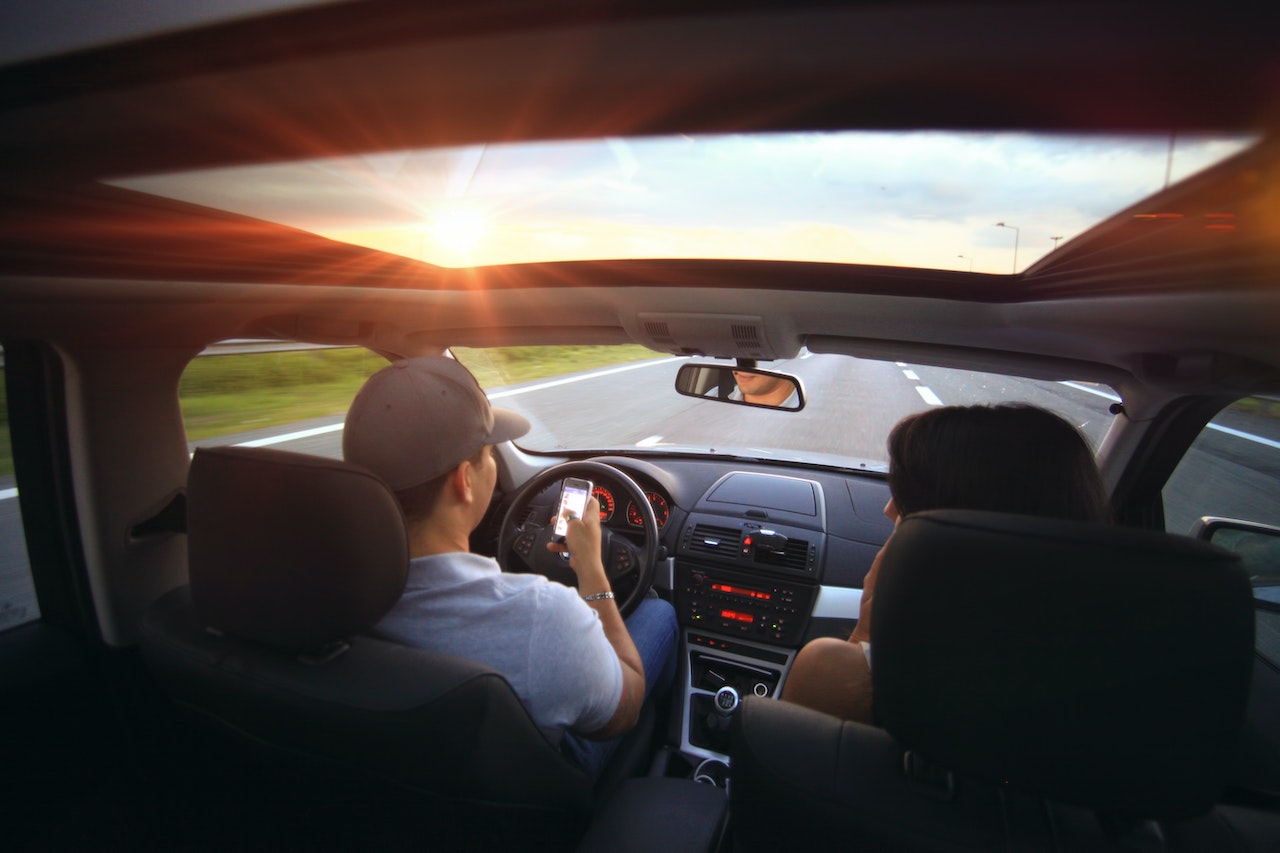In the digital age, where technology is seamlessly woven into the fabric of everyday life, distracted driving has emerged as a significant concern, particularly among young and inexperienced drivers.
For teens, the allure of smartphones, infotainment systems, and social media can pose a serious threat to their safety on the road.
According to the Bonilla Law Firm, a personal injury law firm that specializes in car accidents, “distracted driving becomes more and more of a threat each year, particularly as technology becomes more integrated into our daily lives”.
In this article, we dive into the topic of helping teens curb distracted driving habits, while exploring effective strategies, communication approaches, and hands-on techniques that can empower teens and parents to work together in fostering safer roads and cultivating a culture of attentiveness behind the wheel. So, let’s dive in!
Contents
- Harness Modern Technology for Safety
- Limit the Use of Infotainment Systems
- Keep The Focus on Driving
- Empower Responsible Choices
- Set a Good Example
- Use Technology Wisely
- Plan Road Trips Ahead Ahead Of Time
- Establish Car Rules With Your Teen
- Limit Passengers In The Car
- Encourage Rest Breaks
- Don’t Text While Driving
- Use Defensive Driving Tactics
- Making The Right Changes Today
Harness Modern Technology for Safety
While technology can contribute to distractions, it can also serve as an ally in preventing them. Modern car technologies not only provide an added layer of protection but also encourage responsible driving habits.
Some of the technology features in modern vehicles include:
Adaptive Cruise Control: This feature adjusts the vehicle’s speed to maintain a safe following distance from the car ahead. It can help reduce the need for constant speed adjustments and prevent tailgating, a common source of distraction.
Lane Departure Warning and Lane-Keeping Assist: These systems monitor the vehicle’s position within the lane and provide alerts or corrective actions if the driver unintentionally drifts out of the lane. They promote focused and centered driving, preventing distractions caused by veering off course.
Automatic Emergency Braking: This technology detects imminent collisions and applies the brakes if the driver doesn’t react in time. By acting as a safety net, it can help prevent distractions from turning into accidents.
Hands-Free Connectivity: Many modern vehicles offer hands-free connectivity through Bluetooth technology, allowing drivers to make calls, send messages, and access navigation features without taking their hands off the steering wheel or eyes off the road.
Driver Assistance Systems: Features like blind-spot monitoring, rearview cameras, and parking sensors enhance overall awareness and reduce the likelihood of distractions caused by misjudging distances or obstacles.
Limit the Use of Infotainment Systems
While infotainment systems such as Apple Carplay can provide convenience and entertainment, they can also be a source of distraction, especially with the features that they have.
Teens should set their desired settings, playlists, and navigation routes before they start driving. Adjusting these systems while driving diverts their attention from the road, even for a few seconds.
Keep The Focus on Driving
The allure of modern technology extends beyond the car itself, often spilling over into smartphones and other personal devices, such as Airpods and Smart Watches. To prevent distractions, your teen should:
Silence or Turn Off Notifications: Encourage them to set their phones to “Do Not Disturb While Driving” mode or turn off notifications to minimize distractions.
Utilize Voice Commands: If their car supports voice commands, teach them to use voice controls for phone calls, messages, and navigation.
Mount Devices Securely: If they need to use GPS or navigation apps, ensure that their devices are securely mounted at eye level and within their line of sight.
Empower Responsible Choices
In today’s world, it’s crucial to allow teens to make responsible choices and to understand that their actions behind the wheel have real consequences.
Encourage them to take advantage of the safety features available in their car and to leverage technology wisely to enhance their driving experience while minimizing distractions.
Set a Good Example
Being a role model is essential when teaching your teen about safe driving practices.
Remember that teens often emulate the behavior of their parents or guardians. Show them that you prioritize safety by refraining from any distracting activities while driving.
Put away your phone, avoid eating, and keep your attention solely on the road. By demonstrating responsible behavior, you’re not only keeping yourself safe but also influencing your teen’s driving habits positively.
Use Technology Wisely
Teenagers can use technology to their advantage today, contrary to popular belief.
The “Do Not Disturb” mode on smartphones is a prime example.
Explain to your teenager how this feature can automatically silence notifications, minimizing the temptation to check messages or notifications while driving.
Additionally, introduce them to hands-free voice commands, such as Siri, for navigation and phone calls to stay connected without compromising their safety.
Plan Road Trips Ahead Ahead Of Time
Planning ahead can significantly reduce the need for multitasking while driving. Teach your teen to prepare before they start the car. This includes adjusting the GPS, setting up their music playlist, and adjusting climate controls.
In addition, you should also emphasize the importance of being completely ready to hit the road before they put the car in gear. By planning ahead, they can dedicate their full attention to driving without unnecessary distractions.
Establish Car Rules With Your Teen
Creating clear and non-negotiable rules for in-car behavior is crucial for keeping teens safe on the dangerous roads.
If you are a parent of a teen, you should make it a rule that the car is a distraction-free zone while in motion. If your teen needs to use their phone, eat, or address any non-driving matters, teach them to pull over in a safe area.
Reinforce that safety is the top priority and that they can resume their activities once the car is safely parked. Consistently enforcing these rules will help your teen develop responsible driving habits.
Limit Passengers In The Car
The presence of friends in the car can significantly increase the risk of distractions. While some states have legal restrictions on the number of passengers teen drivers can have, consider implementing your own rules regardless of the legal requirements.
Limiting the number of passengers can help your teen maintain focus on the road and reduce potential distractions caused by conversations and interactions with friends.
Encourage Rest Breaks
Fatigue can impair a driver’s concentration, making it akin to driving while distracted. Teach your teen to recognize signs of drowsiness, such as frequent yawning, heavy eyelids, and difficulty maintaining focus.
Teenagers should also take regular breaks when driving, and they can perform actions such as stretching their legs, and getting some fresh air. These both can rejuvenate their focus and make them more alert behind the wheel.
Don’t Text While Driving

Texting while driving is a particularly hazardous form of distraction. Explain to your teen that sending or reading a text message while driving involves visual, manual, and cognitive distractions simultaneously.
Stress that no text message is worth jeopardizing their safety or the safety of others on the road. Encourage them to silence their phone, place it out of reach, or use the “Do Not Disturb While Driving” mode to prevent the temptation of texting while behind the wheel.
Use Defensive Driving Tactics
Emphasize defensive driving concepts such as maintaining a safe following distance, being aware of the surroundings, and anticipating the actions of other drivers. Teach them to scan their environment regularly, check their mirrors, and always have an escape route in mind.
By adopting defensive driving habits, your teen can reduce the likelihood of getting distracted by sudden events on the road and respond more effectively to challenging situations.
Making The Right Changes Today
In a world where distractions seem to be just a tap away, instilling responsible driving habits in our teens has never been more essential.
By implementing the strategies discussed in this article, you can foster open communication, nurture awareness, and empower our teens to make informed decisions behind the wheel.
Remember, the journey to curbing distracted driving is not a one-time effort but an ongoing commitment. It involves setting a positive example, providing consistent guidance, and reinforcing the importance of undivided attention while driving.
Parents should continue to stand alongside their teens, nurturing their development into vigilant, attentive drivers who contribute to a safer road environment for themselves and everyone they share the road with.
Teens and parents can both work together to combat the dangers of distracted driving, as they are contributing to a brighter, safer future—one where responsible driving is the norm, and the risks of distractions are minimized.



